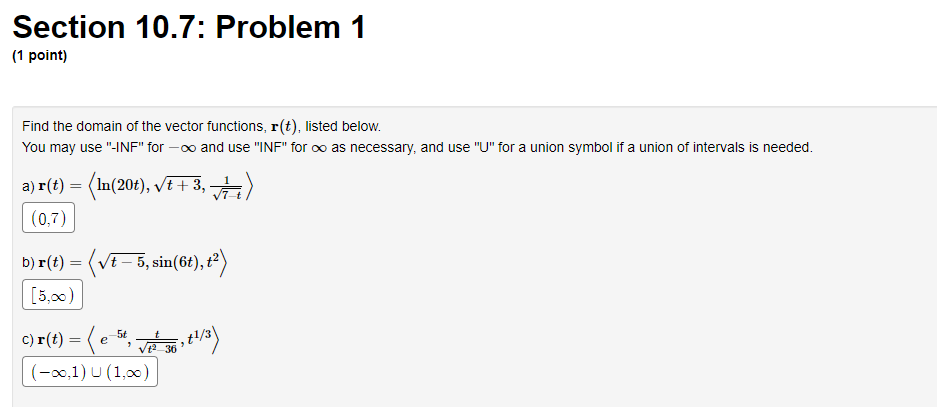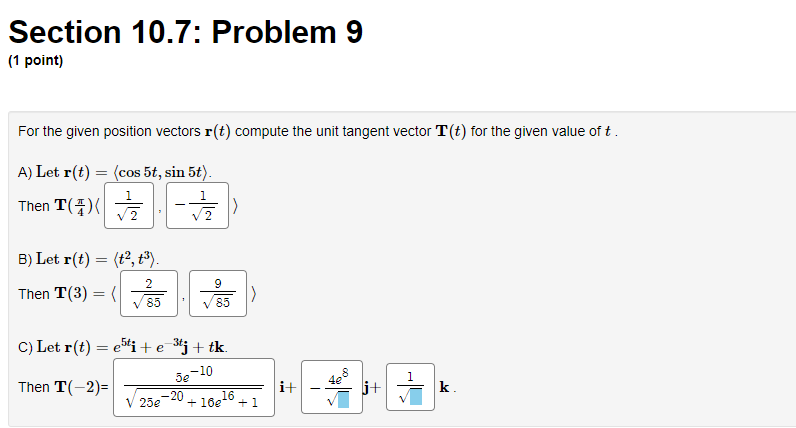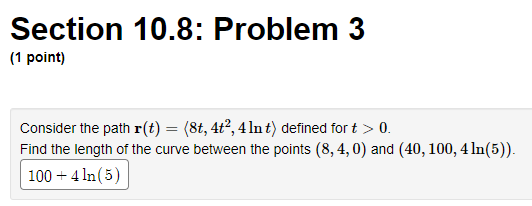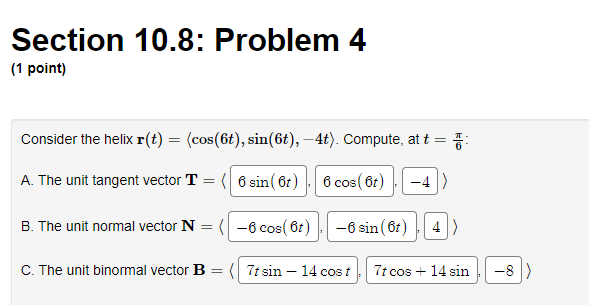Answered step by step
Verified Expert Solution
Question
1 Approved Answer
Calculus 3: Section 10.7: Problem 1 [1 point} Find the domain of the 1vector functions, rm. listed below. You may use INF for oo and
Calculus 3:








Step by Step Solution
There are 3 Steps involved in it
Step: 1

Get Instant Access to Expert-Tailored Solutions
See step-by-step solutions with expert insights and AI powered tools for academic success
Step: 2

Step: 3

Ace Your Homework with AI
Get the answers you need in no time with our AI-driven, step-by-step assistance
Get Started


